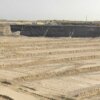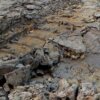The density of a soil influences the stability of a land fill and should be carefully measured in relation to the ultimate purpose of the fill.
Density and the quality of soil
The density of a soil is often used as an indirect description of the quality of the soil and is often a parameter to determine the mechanical properties of the soil although the density of soil is not a mechanical property. The quality of the soil is crucial to ensuring the quality of the final product.
Density is defined as mass per unit volume but it is complex to determine. The key parameters to define density are:
- volumetric weight
- density of solids
- particle density
- dry density
- bulk density
- saturated density
- degree of saturation
- water content
- void ratio of volume of void to that of solids
- porosity.
Measuring density
Various types of density are measured by different methods. For instance, the measurement of reference densities, that is, the minimum and maximum densities, should be determined.
Measurement of in-situ density is done by sand replacement or sand cone methods, the core cutter method or drive cylinder method, weight in water and water displacement method, rubber balloon method and nuclear density tests.
Relative density can be determined by cone penetration testing and by standard penetration testing.
Density and use of fill
The specifications of the density of a material are directly related in engineering terms to the future use of the fill. Suitable materials are defined as having an appropriate density which prevents the risk of collapse and excessive settlement of the soil. For instance, in an earthquake prone area, the density of the fill mass and of the subsoil is crucial in determining if the fill has sufficient resistance against liquefaction.





















